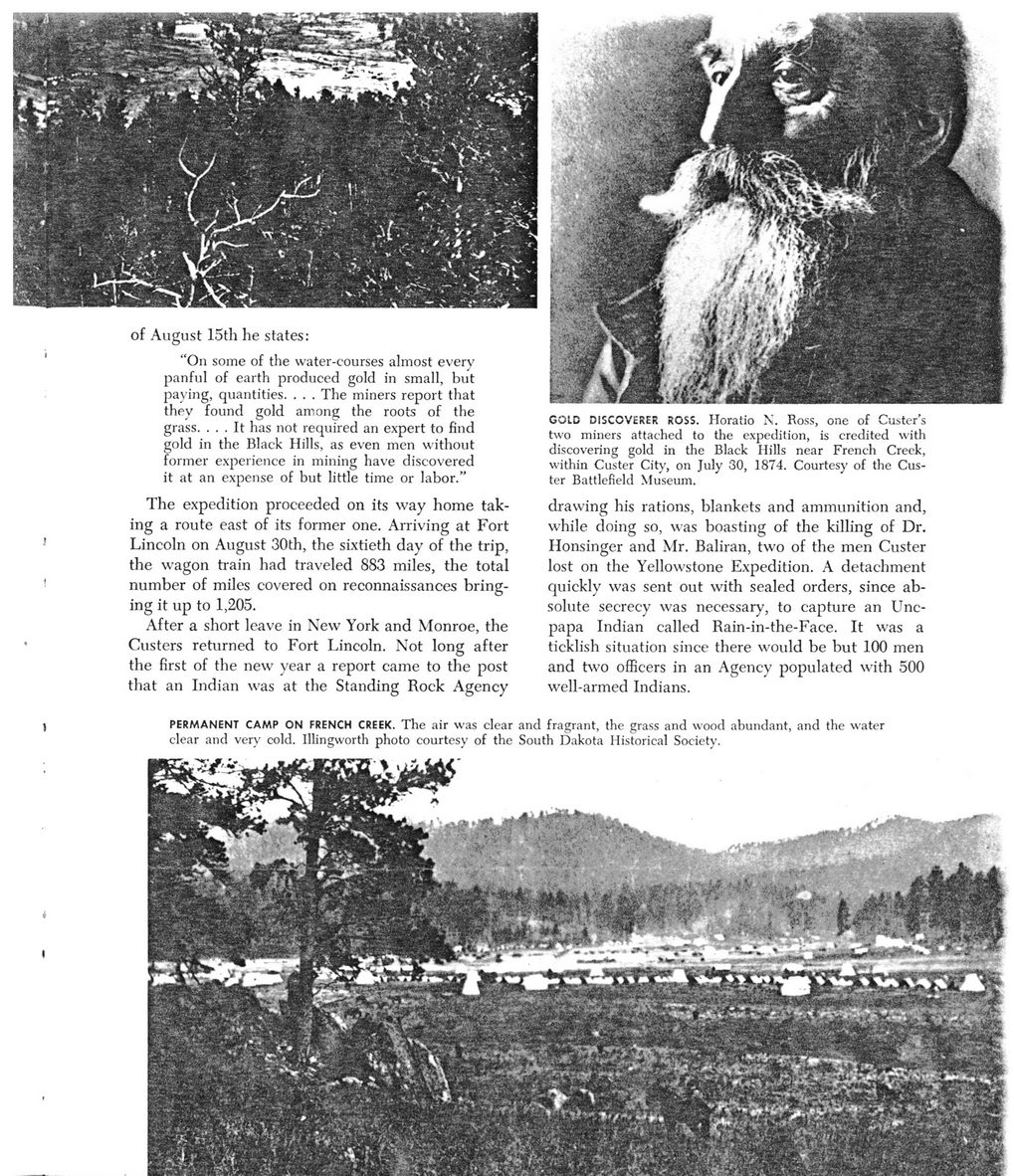This text was obtained via automated optical character recognition.
It has not been edited and may therefore contain several errors.
of August 15th he states: ?On some of the water-eourses almost every panful of earth produced gold in small, but paying, quantities. . . . The miners report that they found gold among the roots of the grass. ... It has not required an expert to find gold in the Black Hills, as even men without former experience in mining have discovered it at an expense of but little time or labor.? The expedition proceeded on its way home taking a route east of its former one. Arriving at Fort Lincoln on August 30th, the sixtieth day of the trip, the wagon train had traveled 883 miles, the total number of miles covered on reconnaissances bringing it up to 1,205. After a short leave in Xew York and Monroe, the Custers returned to Fort Lincoln. Not long after the first of the new year a report came to the post that an Indian was at the Standing Rock Agency GOLD DISCOVERER ROSS. Iloratio N. Ross, one of Custer?s two miners attached to the expedition, is credited with discovering gold in the Black Hills near French Creek, within Custer City, on July 30, 1874. Courtesy of the Custer Battlefield Museum. drawing his rations, blankets and ammunition and, while doing so, was boasting of the killing of Dr. Honsinger and Mr. Baliran, two of the men Custer lost on the Yellowstone Expedition. A detachment quickly was sent out with sealed orders, since absolute secrecy was necessary, to capture an Unc-papa Indian called Rain-in-the-Face. It was a ticklish situation since there would be but 100 men and two officers in an Agency populated with 500 well-armed Indians. PERMANENT CAMP ON FRENCH CREEK. The air was clear and fragrant, the grass and wood abundant, and the water clear and very cold. Illingworth photo courtesy of the South Dakota Historical Society.

Williams, Dr John W 009